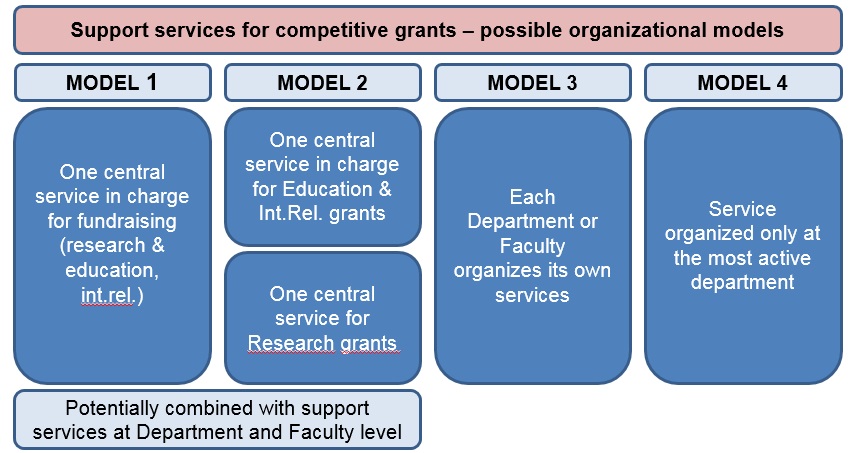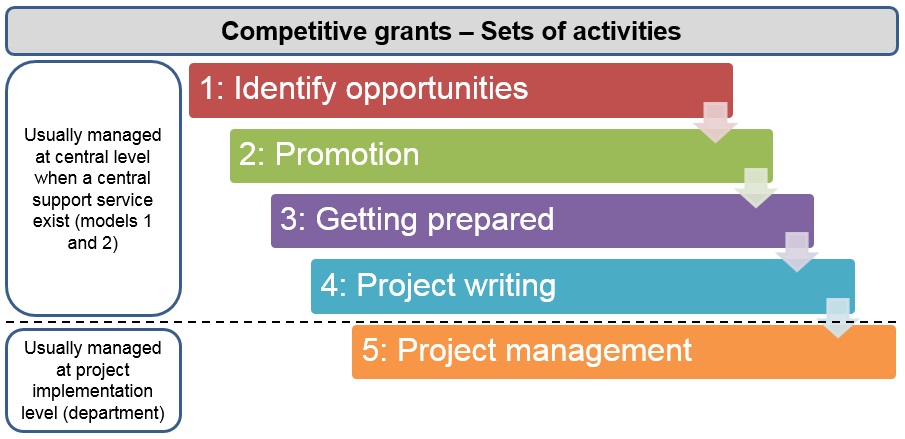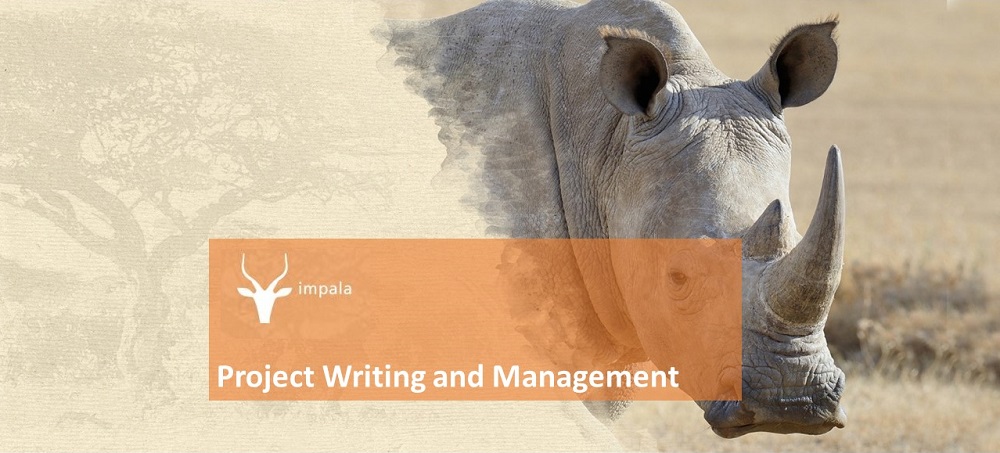Literature about competitive grants reports that the difficulties faced by African universities in becoming leaders in the field are mainly due to:
• lack of capacity in terms of project writing and management skills of the academics involved
• and lack of support services
The experience in Europe has proved that to be successful, academics must write good proposals and also that the existence of proactive support units has a positive impact on institutions’ success rates.
Organization matters!
A recent article on the University of Copenhagen (UC) reports that major investments by university governance in training academics to write well-formulated and well-qualified project applications have helped put them in the top five Horizon2020 recipients. The investment involved setting up a central support office with a staff of 21 experts working together with additional dedicated experts in all faculties supporting academics’ participation in Horizon 2020 Calls. The UC’s success story can be used as a possible organizational model.
Support services models
The literature mainly focuses on funding for research, but while research is the most typical target, it is not the only reason for attracting funding. Driven by internationalization and by the increasing role of universities within a knowledge society, other activities at higher education institutions (HEIs) have increasingly attracted the interest of donors. Consequently, universities can now count on diverse opportunities in the fields of education, cooperation and capacity building.
Looking at the EU experience, many universities took the strategic decision to include within their organizational charts support services for competitive grants in order to exploit these growing opportunities. The outcomes of this step vary depending on the diverse organizational choices made.
The first choice concerns the location of the service according to the target of funding. Is it more efficient to create a single fundraising service, regardless of topic? Or is it more effective to create multiple services for different domains? Many institutions opted to create two support services: one in the Research Development office and one in the International Relations office. Thus, the Research Development office deals with Horizon2020 while the International Relations office is in charge of Erasmus+.
The second choice concerns the internal distribution between the centre and the peripheries. Is it more efficient to create strong ‘central’ services, serving all departments and faculties, or is it more effective to set up one support unit in each department? Decentralized organization may foster knowledge transfer and guarantee that administration is closely linked to activities (and academics). There are downsides to this, however, such as the lack of management and capacity uniformity, the risk of losing information and overall control, and therefore impeding economies of scale.
Still, the battle between efficiency and effectiveness does not necessarily have an absolute winner. Each potential model has pros and cons and models can be combined. For example, some institutions have decided to go for blended models such as setting up a strong central office supported by departmental offices preserving capillarity (e.g. UC experience for research).
In this diversity, we can identify at least four common models as outlined in the picture:

Support services’ tasks and their distribution within the organization
The third choice concerns the tasks a support service is expected to cover. We can identify five sets of activities:
1: Identify funding opportunities. This can involve online searching, analyzing documents, matching opportunities with institutional interests, etc.
2: Promote external and internal liaisons including networking with key international partners, lobbying, mapping and teaming up different academic groups, disseminating information via newsletters, info days and dedicated webpages, stimulating participation, etc.
3: Getting prepared, which may include training sessions about project writing and management.
4: Project writing, which includes supporting academics when developing proposals by refining ideas, keeping them in line with donors’ expectations, checking administrative requirements, promoting persuasive style (which is very different to typical academic writing), partnership creation and so on.
5: Project management, which includes facilitating day-to-day grants management through to the reporting phase.
When it comes to making organizational decisions in terms of activities, there are two aspects to consider: the variety of tasks a service should cover and their internal distribution.
A support service does not necessarily need to cover all five sets of activities. This is particularly true in the start-up phase, when we expect to have limited resources at our disposal, including skills. The complete set is more likely to be offered by mature offices. Project writing and management is also a matter of experience, so it may be smart to design an incremental development plan that starts with basic but strategic services, for instance those that are more likely to stimulate participation regardless of performance, and build up from there.
When it comes to internal distribution, in the case of blended models 1 and 2 we see that the first four sets of activities are mainly managed at central level, but the project management phase is mostly managed at department level in order to keep management closely linked to activities:

In short, these support units serve to guide – if not directly manage – the project. Competitive grants often come with a lot of paperwork, strict formal requirements and many reporting criteria. As a result, in the absence of a support service, academics spend lot of time dealing with grant bureaucracy rather than focusing on activities. Which model is the best is a matter for university governance, and depends on strategic decision-making and various considerations such as institutional priorities, the resources available and political orientations, as well as at national/regional and international level.


